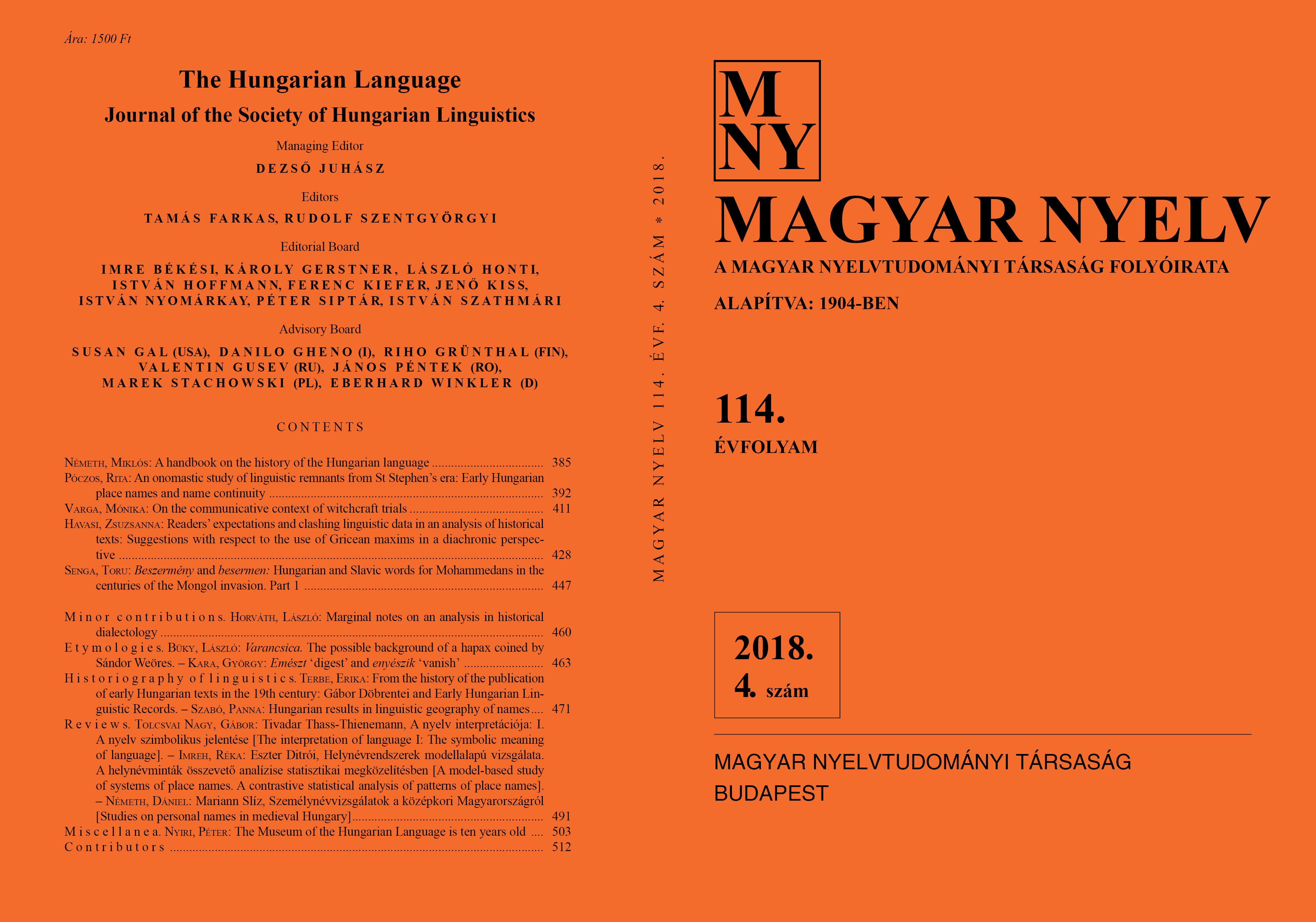An onomastic study of linguistic remnants from St Stephen’s era
Early Hungarian place names and name continuity
DOI:
https://doi.org/10.18349/MagyarNyelv.2018.4.392Keywords:
early history of Hungary, place name continuity, etymology of place names, remnants, deed of foundation of the episcopate of PécsAbstract
The paper surveys toponymic data in the deed of foundation of the episcopate of Pécs in an etymological perspective, with special regard to the possible continuity of names. Most toponymic data in the document are probably continuations of their pre-conquest antecedents; however, this does not necessarily entail a continuity of population in each and every case. The probability of name continuity differs across the various types of names. River names occurring in the document in their Latin form (as well as the parallel vulgar versions like Duna or Száva) must have been continuous. The same may be true of toponyms like Pécs, a vulgar name that only occurred later on in a written form but must have been hidden behind the Latin name occurring in the document, or perhaps also of the German form Raab. Names of the latter type refer to contacts across the subsequent groups of population more clearly and in a geographically more anchored manner than river names do. Of the toponyms of the document, the settlement names Győr and Tápé, as well as the river name Kapos, were definitely coined after the Hungarian conquest. With respect to the other names, the issue of continuity cannot be settled at the moment.
Downloads
Published
Issue
Section
License
Copyright (c) 2024 Rita Póczos

This work is licensed under a Creative Commons Attribution-NonCommercial-NoDerivatives 4.0 International License.
Magyar Nyelv is a Diamond Open Access periodical. Documents can be freely downloaded and duplicated in an electronic format, and can be used unchanged and with due reference to the original source. Such use must not serve commercial purposes. In the case of any form of dissemination and use, Hungarian Copyright Act LXXVI/1999 and related laws are to be observed. The electronic version of the journal is subject to the regulations of CC BY-NC-ND (Creative Commons – Attribution-NonCommercial-NoDerivatives).
The journal permits its authors, at no cost and without any temporal limitation, to make pre-print copies of their manuscripts publicly available via email or in their own homepage or that of their institution, or in either closed or free-for-all repositories of their institutions/universities, or other non-profit websites, in the form accepted by the journal editor for publication and even containing amendments on the basis of reviewers’ comments. When the authors publicize their papers in this manner, they have to warn their readers that the manuscript at hand is not the final published version of the work. Once the paper has been published in a printed or online form, the authors are allowed (and advised) to use that (post-print) version for the above purposes. In that case, they have to indicate the exact location and other data of the journal publication. The authors retain the copyright of their papers; however, in the case of an occasional secondary publication, the bibliographical data of the first publication have to be included.



